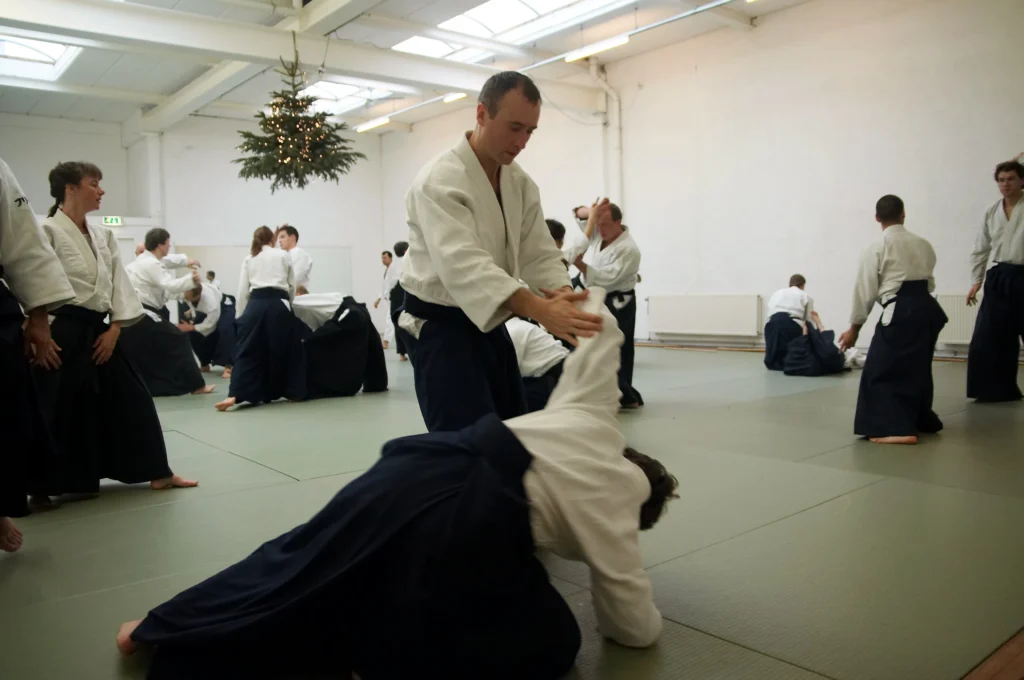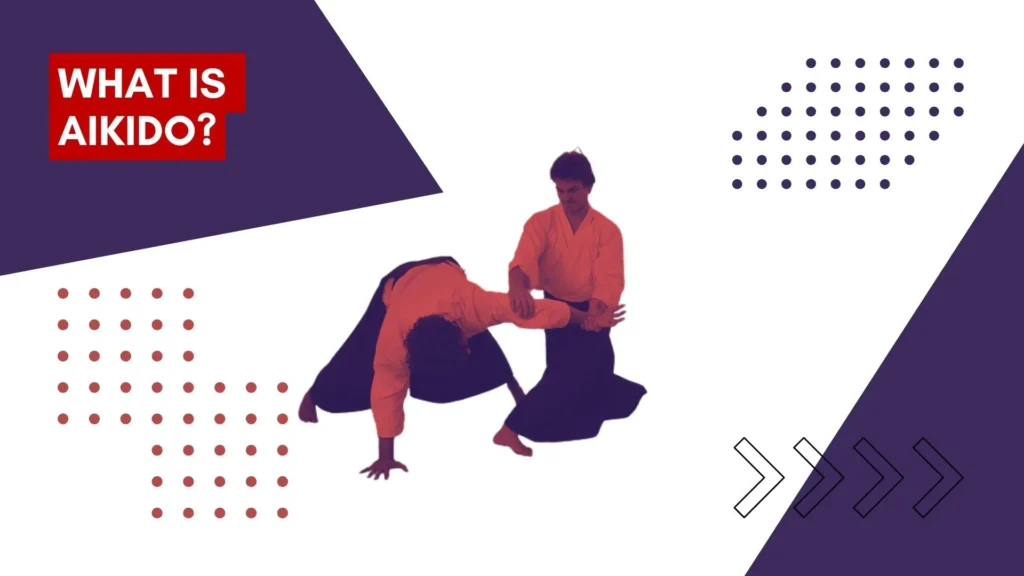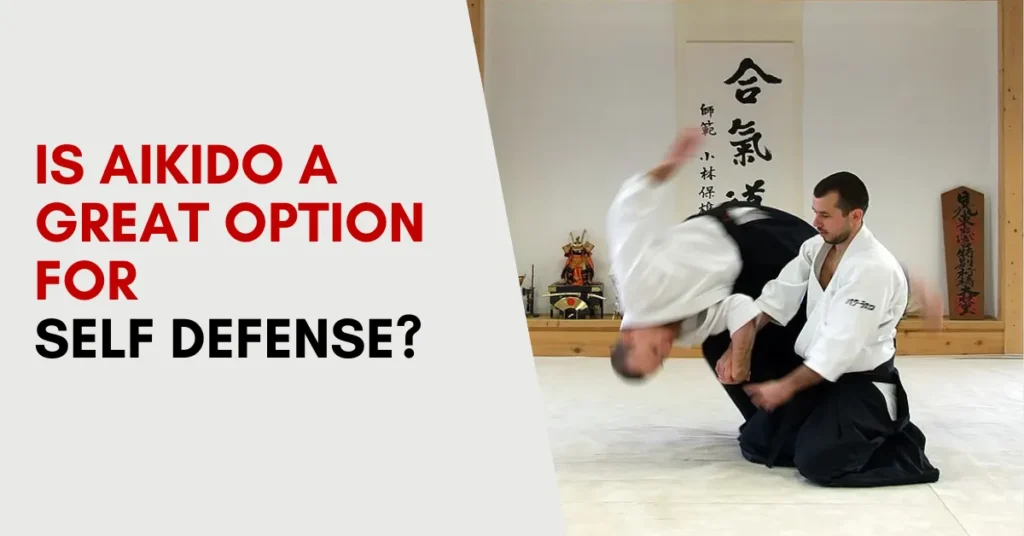It may surprise you to learn that aikido, a contemporary Japanese martial art, is practiced in more than 140 nations worldwide. This unique martial art form’s impact and attraction are demonstrated by its broad popularity. Morihei Ueshiba created aikido, which emphasizes grappling and suppleness through throws and joint locks, among other techniques. In contrast to many other combat arts, the main objective of aikido is not to teach violence but rather self-overcoming.
Table of Contents
Key Takeaways
- Aikido is a modern Japanese martial art practiced in over 140 countries.
- Developed by Morihei Ueshiba, aikido emphasizes grappling and softness.
- Aikido techniques involve throws and joint locks.
- The goal of aikido is to overcome oneself rather than promote violence.
- Aikido is known for its wide-reaching appeal and focus on personal growth.
The Philosophy and Principles of Aikido
Aikido is not just a martial art, but a way of life. Its philosophy revolves around the principles of harmony, unifying energy, and personal growth. The essence of aikido lies in its commitment to resolving conflicts in a non-lethal and non-aggressive manner, promoting peace and understanding.
Aikido Philosophy: Cultivating Harmony and Overcoming Oneself
The philosophy of aikido emphasizes the pursuit of harmony, both within oneself and with others. By blending with the opponent’s energy, rather than directly opposing it, aikido practitioners seek to redirect an attack’s momentum and neutralize aggression. This way, aikido becomes a path towards conflict resolution and personal development.
Aikido Principles: Irimi, Atemi, Kokyu-ho, Sankaku-ho, and Tenkan
Aikido is guided by several essential principles that inform its techniques and movements:
- Irimi: The principle of entering involves stepping into the opponent’s space to redirect their attack.
- Atemi: Aikido employs strikes or feints to distract and disrupt the attacker’s focus, creating an opportunity to redirect their energy.
- Kokyu-ho: Breathing control is crucial in aikido, as it allows practitioners to maintain balance, composure, and a strong connection with their own energy.
- Sankaku-ho: The triangular principle helps aikido practitioners shape their movements and maintain stability in their techniques.
- Tenkan: Turning movements are employed to reposition oneself and redirect the opponent’s energy, allowing for effective throws and joint locks.
Spiritual and Mental Training: The Path to Self-Discovery
Aikido is not solely about physical techniques; it extends to spiritual and mental training as well. By engaging in aikido practice, individuals embark on a journey of self-discovery and personal growth. The art’s spiritual training cultivates a sense of well-being, inner peace, and harmony with the universe. It encourages practitioners to develop heightened awareness, compassion, and empathy towards others.
Aikido Techniques and Training
Aikido techniques involve precise movements and strategic positioning to overcome an opponent while minimizing harm. By blending with the attacker’s energy, aikido practitioners are able to redirect the force of the attack, neutralizing it effectively.
The training in aikido emphasizes the development of timing, positioning, and a sense of flow. It involves practicing a wide range of attacks, including kicks, punches, strikes, grabs, chokes, and even attacks with weapons. Through consistent practice, aikido practitioners refine their skills and become adept at responding to various types of attacks.
One of the key elements of aikido is the use of joint locks. These techniques involve manipulating an attacker’s joints to restrict their movement and neutralize their ability to continue the attack. Joint locks in aikido are executed with precision and control, ensuring the safety of both the practitioner and the attacker.
Throughout aikido training, practitioners focus on improving their balance, timing, and reaction. By honing these skills, they become more capable of defending themselves in real-life situations. The physical and mental conditioning that comes with aikido practice also contributes to increased strength, flexibility, focus, and overall well-being.
| Aikido Techniques | Benefits |
|---|---|
| Throws | Develops agility and body coordination |
| Joint locks | Enhances control and self-discipline |
| Blending techniques | Improves adaptability to unpredictable situations |
| Submissions | Promotes focus and clarity of mind |
Through the practice of aikido, individuals gain not only the skills for self-defense but also the mindset and physical abilities needed for personal growth and harmony. Aikido is a holistic martial art that instills discipline, respect, and the pursuit of self-improvement.

History and Founder of Aikido
Aikido, a modern martial art with a rich history, was created by Morihei Ueshiba, also known as O-Sensei, in the early 20th century. Ueshiba’s journey to developing aikido began with his martial training in various disciplines, including Daito-ryu Aiki-jujutsu. However, it was his spiritual beliefs, heavily influenced by his involvement with the Omoto-kyo religion, that shaped the unique philosophy of aikido.
Ueshiba’s vision for aikido was to create an art that could be used for self-defense while promoting harmony and peace. He believed in the power of unifying energy and sought to develop techniques that emphasized blending with an attacker’s force rather than opposing it directly. Through years of dedication and exploration, Ueshiba synthesized his martial knowledge and spiritual insights into the art of aikido.
As the founder of aikido, Ueshiba became a renowned master and teacher. He imparted his knowledge to many disciples, including his son Kisshomaru Ueshiba and Koichi Tohei, who would go on to become influential figures in the aikido world. The teachings of Ueshiba’s senior students have since given rise to different styles and interpretations of aikido.
“Aikido is the way of harmony with the spirit of the universe, and therefore I believe it is the highest principle of martial arts.”
Aikido, stemming from Ueshiba’s profound wisdom and martial prowess, has spread worldwide as practitioners continue to honor the founder’s legacy and develop their own understanding of the art. Let us explore the enduring influence of aikido and the practitioners who have dedicated themselves to its study and practice.
Aikido Associations and Practitioners
Aikido, with its rich history and global reach, has various organizations and associations dedicated to overseeing its practice and promoting its teachings. One such prominent organization is the Aikikai Foundation, which is headed by the Ueshiba family and is recognized as the largest aikido organization worldwide.
The Aikikai Foundation plays a crucial role in supporting aikido instructors, maintaining standardized test requirements, and offering training seminars and certification programs. This ensures that aikido practitioners receive consistent and high-quality instruction, fostering their growth and development in this martial art.
Within the vast community of aikido, numerous organizations and associations exist that share a common goal of advancing aikido-related practices and knowledge. These bodies provide valuable resources, networking opportunities, and platforms for aikido enthusiasts to connect and collaborate.
Aikido practitioners all over the world benefit from the guidance and support of these associations and organizations. They offer a sense of community, foster camaraderie among practitioners, and help ensure the preservation and dissemination of aikido’s principles and techniques.
Aikido associations also facilitate the exchange of ideas and experiences among practitioners, promoting continuous learning and growth. This dynamic environment allows for the exploration and development of new approaches and interpretations of aikido, enriching the art form and adapting it to the evolving needs of modern practitioners.
Practitioners of aikido can find these associations and organizations valuable in their journey, as they offer opportunities to train, learn, and connect with other like-minded individuals. The exchange of knowledge and experiences within these communities nurtures growth, and practitioners can expand their understanding and proficiency in aikido through interaction with peers.
Notable figures, such as Kisshomaru Ueshiba and Moriteru Ueshiba, have dedicated themselves to the development and promotion of aikido. They have played pivotal roles in the aikido community, perpetuating the teachings and legacy of Morihei Ueshiba, the founder of aikido.
Aikido practitioners have the opportunity to train in dojos, which are training centers affiliated with different associations and organizations, such as the Aikikai, Yoshinkan, and Tomiki Aikido. These dojos serve as spaces for learning, practicing, and furthering the art of aikido. They provide a supportive environment for students to develop their skills and understanding under the guidance of experienced instructors.Image not displayed here. The image is centered.
Conclusion
Aikido, the art of harmony and blending, offers a wide range of benefits to practitioners, making it a modern martial art worth exploring. Whether you are looking to improve your self-defense skills or enhance your physical and mental well-being, aikido has something to offer.
One of the key benefits of practicing aikido is its focus on redirecting an opponent’s energy, rather than opposing it directly. This approach not only enhances self-defense capabilities but also promotes a sense of harmony and non-aggression. Through the practice of aikido techniques, practitioners develop better balance, coordination, and flexibility, improving their overall physical fitness.
Aikido is not just about physical training, but it also offers mental and emotional benefits. By cultivating a sense of well-being, awareness, and compassion, aikido helps practitioners develop mindfulness and emotional resilience. The practice of aikido becomes a holistic experience, empowering individuals to navigate conflicts and challenges with grace and poise.
As a widely practiced modern martial art, aikido has diverse styles and associations worldwide. The teachings and principles passed down by its founder, Morihei Ueshiba, continue to shape and inspire practitioners. Aikido provides a path for personal growth and transformation, allowing individuals to explore the art of harmony and find their own unique aikido experience.
FAQ
What is Aikido?
Aikido is a modern Japanese martial art that focuses on grappling and softness. It incorporates techniques such as throws and joint locks. Aikido promotes harmony and overcoming oneself rather than cultivating violence.
What are the philosophy and principles of Aikido?
The philosophy of Aikido emphasizes harmony, unifying energy, and overcoming oneself. Its principles include irimi (entering), atemi (strikes), kokyu-ho (breathing control), sankaku-ho (triangular principle), and tenkan (turning) movements.
What is Aikido and is it effective?
Aikido is a Japanese martial art emphasizing self-defense through redirecting an opponent’s energy. It is considered effective due to its focus on harmonizing with attackers.
Is Steven Seagal an Aikido master?
Yes, Steven Seagal is recognized as an Aikido master with a 7th dan black belt, integrating Aikido into his martial arts film work.
What do you do in Aikido?
Aikido involves learning techniques for self-defense, including blending with an opponent’s energy, using joint locks, throws, and practicing safe falling (ukemi).
Is it hard to learn Aikido?
Learning Aikido varies, with some finding it challenging due to its unique movements and principles. Mastery depends on dedication and individual aptitude.
Who is the founder of Aikido and what is its history?
Aikido was founded by Morihei Ueshiba, also known as O-Sensei. He developed Aikido in the early 20th century by synthesizing his martial training, including Daito-ryu Aiki-jujutsu, with his spiritual beliefs influenced by the Omoto-kyo religion.


